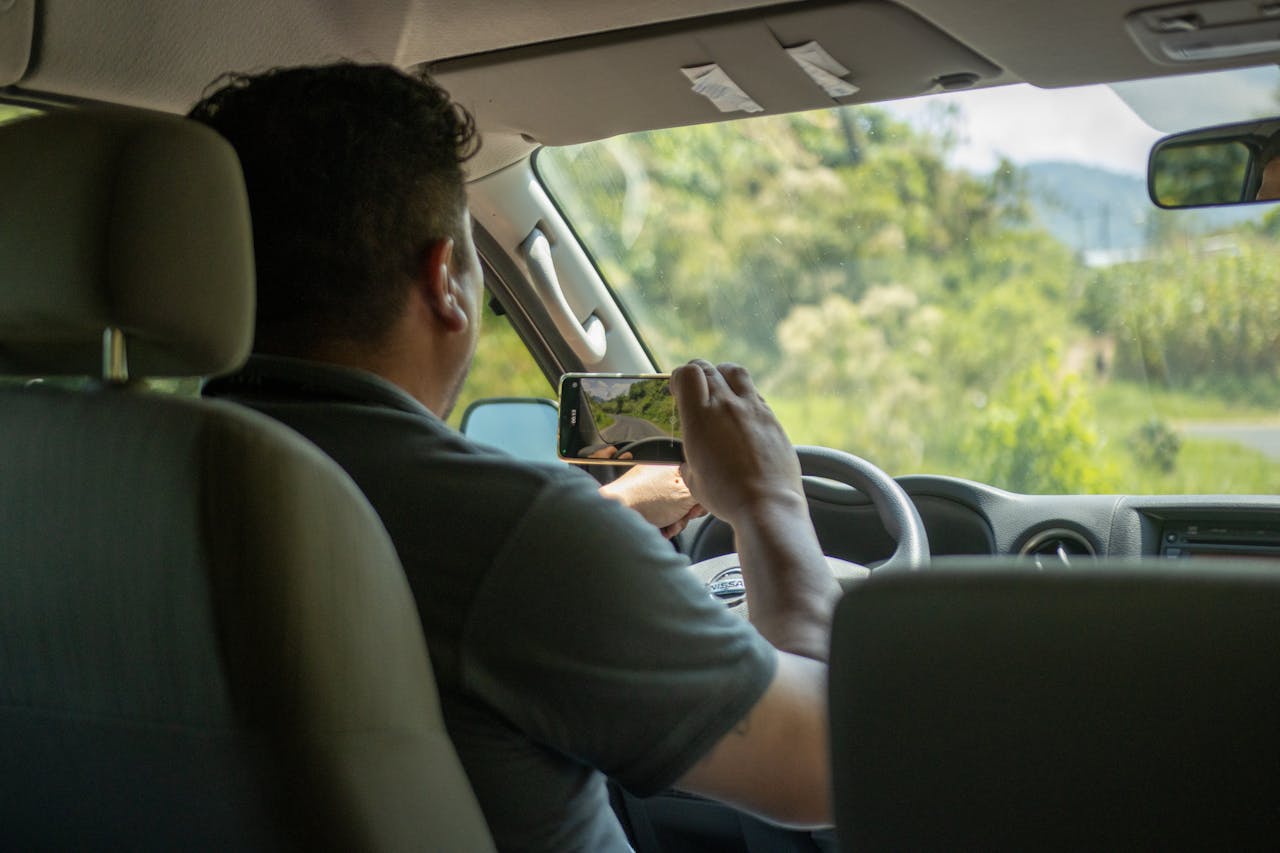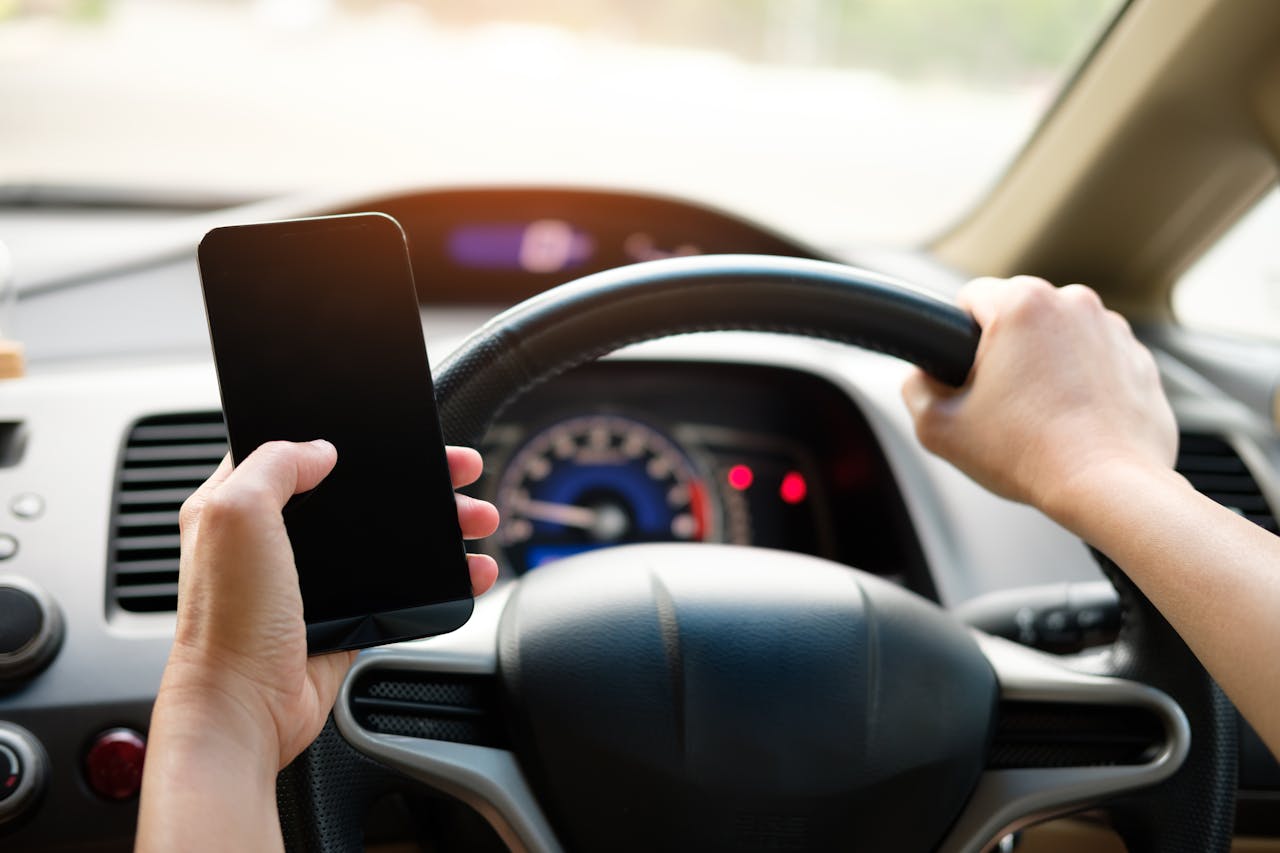A new hands-free driving law now treats a phone in your hand like a ticket waiting to happen. In South Carolina, the rule took effect on September 1, 2025, and the first offense costs $100. Get caught again within three years, and it jumps to $200 plus two license points. The clearest part is the core rule: if the car is moving, your hands should not be on a phone.
According to federal safety data, distracted driving is still claiming thousands of lives every year, so states keep tightening rules. NHTSA’s most recent estimates attribute 3,275 deaths in 2023 to distraction-affected crashes, a reminder that even “quick” glances can carry real risk. Teens and new drivers are especially vulnerable, since multitasking behind the wheel is both tempting and unforgiving.
What the new hands-free rule actually bans
In plain English, hands-free means no holding or supporting a device while you drive. If your vehicle is in motion, tapping, scrolling, cradling the phone between your ear and shoulder, or glancing down at a phone in your hand can all qualify as violations. Mounted devices and true hands-free controls are allowed, but only if you are not physically holding the phone.
South Carolina’s law spells this out clearly, with a bright-line test that is easy for an officer to observe. The simplicity is intentional, since “no-touch” rules are easier to enforce than older texting-only bans. More states have moved in this direction in recent years, because it removes the argument about whether a driver was texting, mapping, or changing music.
Who it applies to, and the main exceptions

If you are driving on a public road, the rule applies. There are narrow carve-outs that exist in many states and in South Carolina’s statute. You can use a phone when you are legally parked, and you can initiate a call to report an emergency. First responders and certain workers operating within the scope of duty may have exemptions, but everyday drivers do not.
One gray area that trips people up is maps. A mounted phone you can glance at is generally permitted, but holding the phone while looking at a map is typically not. Courts in other states have reinforced this distinction, emphasizing that “hands-free” really does mean hands-free for navigation too.
Fines, points, and how enforcement works
For South Carolina, the numbers are straightforward. First offense, $100. Second and subsequent offenses within three years, $200 plus two points. If you are a teen driver, those points matter more than you think, since they can raise insurance costs and limit license privileges. Expect targeted enforcement early on, especially around school zones and busy corridors, since that is where distraction does the most damage.
It is also useful to know that similar first-offense fines exist in other states. Michigan’s hands-free law, for example, took effect in mid-2023 with a $100 base fine for a first violation and a higher penalty for repeats. That context helps explain why you may see consistent messaging on road signs when you drive across state lines.
Why states are doubling down on hands-free
The safety case is strong. NHTSA’s 2023 research note shows distraction was a factor in roughly 8 percent of all traffic fatalities that year, with 3,275 people killed. Independent studies and insurance-industry research also connect visual-manual phone use to higher crash risk. It is not just texting, it is any interaction that pulls eyes and attention off the road, even for a couple of seconds.
There is also evidence that handheld bans change behavior. Evaluations from earlier adopters found large, sustained drops in visible handheld phone use after bans took effect. That does not solve distraction completely, since voice interactions and in-car screens can still divide attention, but it removes the riskiest, easiest-to-see behavior.
What “holding” looks like in real life

A rule can be clear, yet everyday habits create confusion. If you pick up your phone at a red light to change a playlist, you are still “holding.” If your phone is in your lap and you tap to wake it while the car rolls, that counts too. If you are pinching the phone between your shoulder and ear, that is also a violation, even if your hands are technically on the wheel.
The simplest standard that road officers use is visibility plus behavior. If the phone is in your hand while the vehicle is in motion, you are at risk for a stop. Mounted devices and steering-wheel controls are your friend here, because they reduce physical handling and shorten glances.
Set up your car once, then forget it
Hands-free compliance gets easy when your setup is right. Pair your phone to Bluetooth before you leave the driveway, and mount the device at eye level without blocking your view. Turn on Do Not Disturb While Driving, or the equivalent setting, so texts get silenced and auto-replied. Put your most-used navigation and music apps on the first screen, with the route planned before you shift into drive.
If you truly must interact, pull off the road and park legally. That is the clean, legal way to handle a changing plan. Many modern systems also support single-button or single-swipe interactions on a mounted phone, which is materially safer than handheld fiddling at 45 miles per hour.
Teen drivers: what this means for you

Teens drive fewer miles than adults, yet face higher crash risk per mile while they build experience. Add a phone to early driving and the risk curve gets worse. The easiest way to protect yourself and your friends is to adopt a no-phone-in-hand rule that is stricter than the law. Make one person the “designated texter” in the passenger seat, or commit to voice commands only after you are fully paired and mounted.
Remember, points and fines are only part of the story. If a crash happens, insurance costs rise and parents or schools get involved. A clean record opens doors for jobs, internships, and cheaper premiums. The hands-free rule is really a career and budget rule in disguise.
Common myths, quickly debunked
“I can hold it at stoplights, that is fine.” Not reliably. In many jurisdictions, holding is prohibited whenever you are on a public roadway, moving or not. It is also easy to roll a few feet while distracted and turn a minor risk into a major one.
“I only use it for maps.” That is still a problem if the phone is in your hand. Use a mount, set your route before you go, and rely on voice prompts while moving.
“Everybody does it, enforcement is rare.” New laws often bring targeted crackdowns, especially near schools and busy arterials. Officers only need to see a phone in your hand to initiate a stop under hands-free statutes, which makes enforcement straightforward.
A small habit that saves you $100
Try the “glove-box challenge” for seven days. Before you shift into drive, mount your phone or stash it in the glove box, then rely on voice prompts and your car controls. If you must change something, park first. You will notice calmer drives, fewer missed turns, and, most importantly, zero chance of a hands-free ticket.
Sources
South Carolina Department of Public Safety, September 2025; National Highway Traffic Safety Administration, April 2025 and November 2024; Insurance Institute for Highway Safety, 2025; Axios Detroit, June 2023; Los Angeles Times, June 2025; Governors Highway Safety Association, July 2025.


